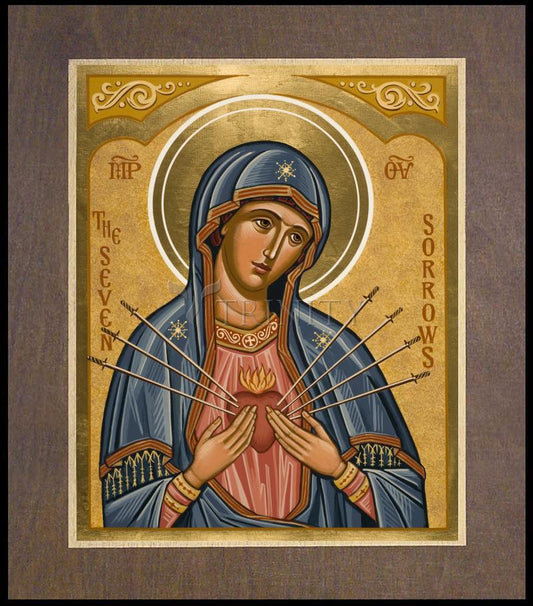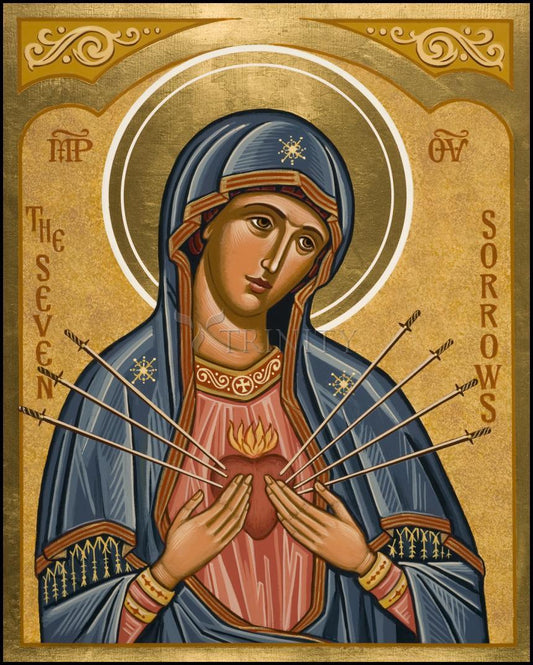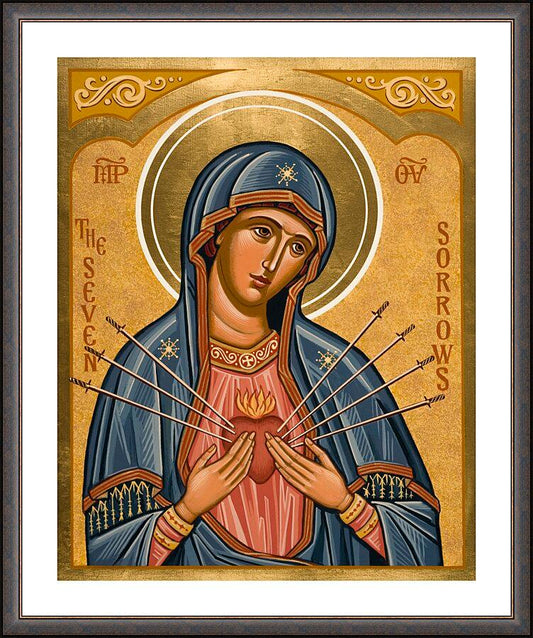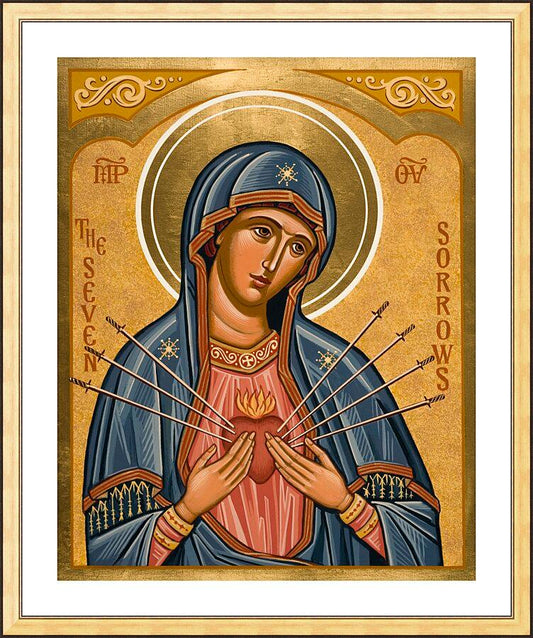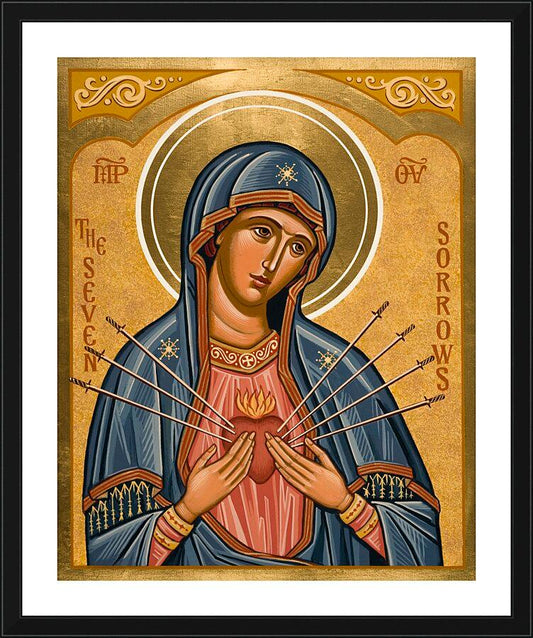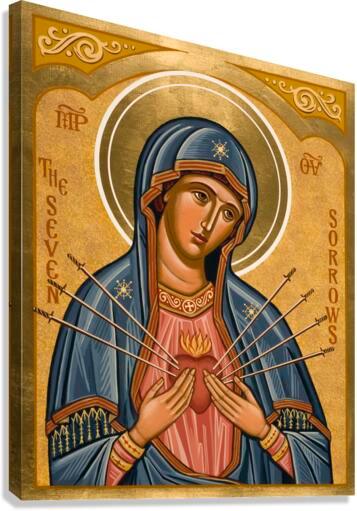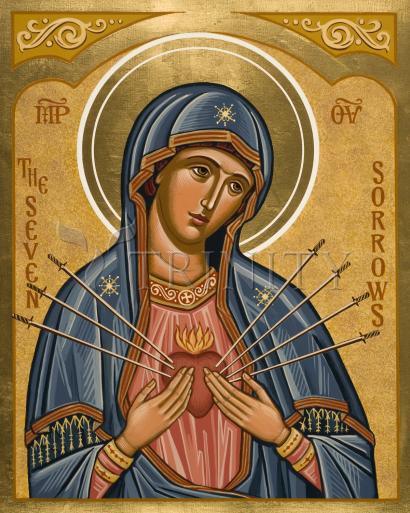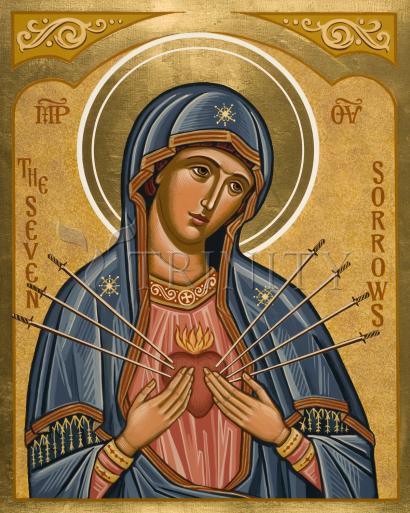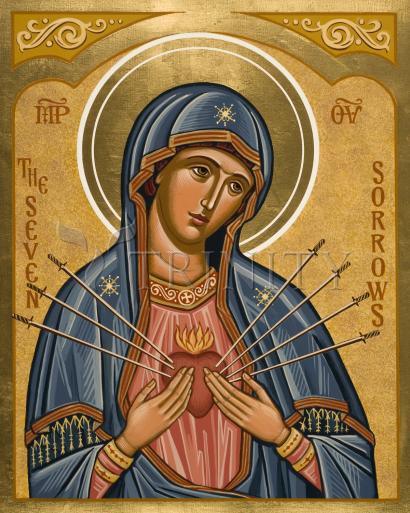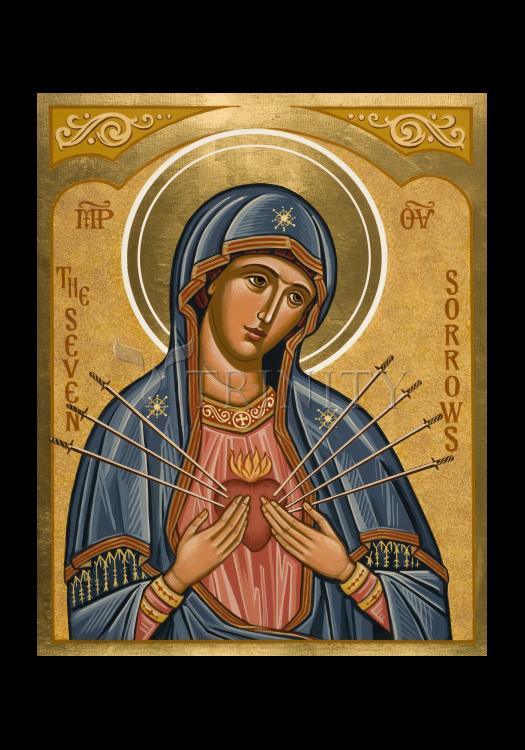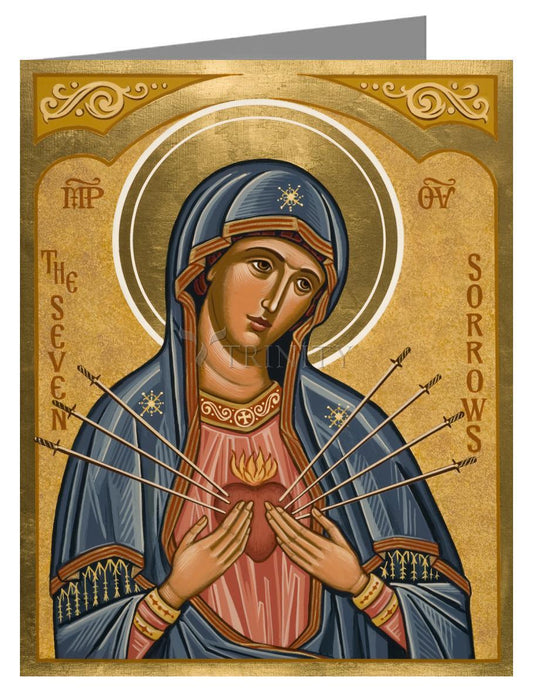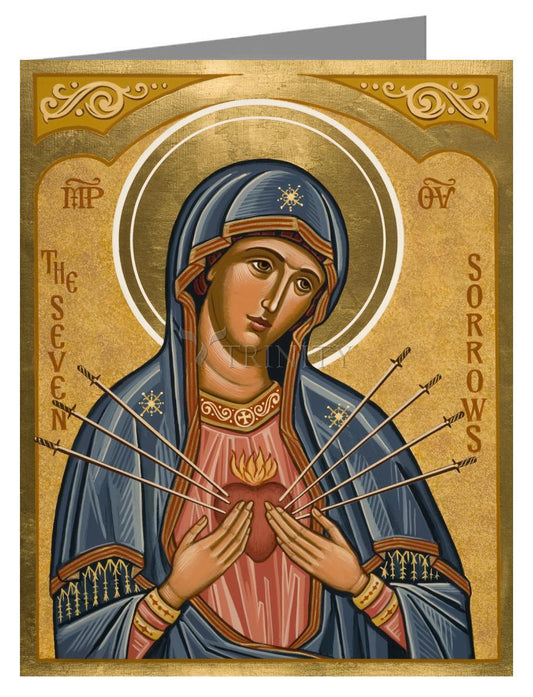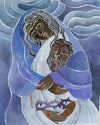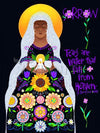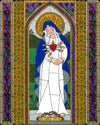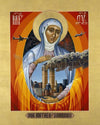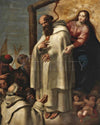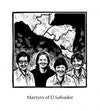ARTIST: Joan Cole
ARTWORK NARRATIVE:
The feast of Our Lady of Sorrows dates back to the twelfth century. Catholics have recognized seven events in the life of Mary that caused her great sorrow. That is why the image of Mary as Our Lady of Sorrows often shows her with seven swords piercing her Immaculate Heart. The swords represent her grievous sorrows. These sorrows are:
The prophecy of Simeon (Luke 2:25-35)
The flight into Egypt (Matthew 2:13-15)
Loss of the Child Jesus for three days (Luke 2:41-50)
Mary meets Jesus on his way to Calvary (Luke 23:27-31)
Crucifixion and Death of Jesus (John 19:25-30)
The body of Jesus taken from the Cross (John 19:31-37)
The burial of Jesus (Luke 23:50-56)
Her feast day is September 15.
Read More
Devotion to Our Lady of Sorrows became a standard devotion in the Church around the 14th century. It was revealed to St. Bridget of Sweden (1303-1373) that devotion to the Blessed Virgin Mary's Seven Sorrows would bring great signal graces. The devotion consists in praying seven Hail Mary's while meditating on the Seven Sorrows of Mary.
Mary, in a unique way, willingly suffered alongside her Divine Son as he gave his life to save the world, and she felt the bitterness of his passion as only a mother can. This devotion is especially remembered during September, the Month of Our Lady of Sorrows (the feast of Our Lady of Sorrows is September 15th), and during the season of Lent.
The feast of Our Lady of Sorrows dates back to the twelfth century. Since at least that time, Catholics have recognized seven events in the life of Mary that caused her great sorrow. That is why the image of Mary as Our Lady of Sorrows often shows her with seven swords piercing her Immaculate Heart. She's also sometimes represented by a winged heart pierced with seven swords.



